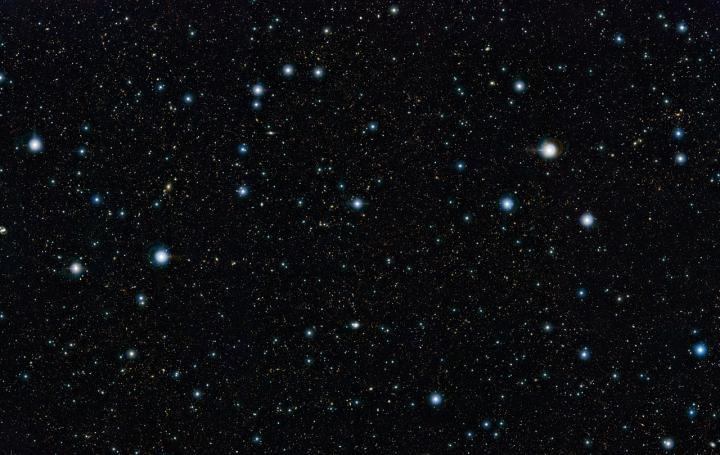Apr 5 2018
During a presentation at the European Week of Astronomy and Space Science in Liverpool, astronomers revealed one of the largest 3D maps of the infant Universe. A research team headed by Dr. David Sobral of Lancaster University created the chart using the Subaru telescope in Hawaii and the Isaac Newton telescope in the Canary Islands.
Looking back in history to 16 different epochs between 11 and 13 billion years ago, the researchers discovered nearly 4000 early galaxies, many of which will have progressed into galaxies like man’s own Milky Way.
 This is a view of the COSMOS field in the constellation of Sextans, seen in infrared light. This corresponds closely to the region of the sky studied in the new work. (Image credit: ESO/UltraVISTA team. Acknowledgement: TERAPIX/CNRS/INSU/CASU)
This is a view of the COSMOS field in the constellation of Sextans, seen in infrared light. This corresponds closely to the region of the sky studied in the new work. (Image credit: ESO/UltraVISTA team. Acknowledgement: TERAPIX/CNRS/INSU/CASU)
Light from the farthest galaxies takes billions of years to reach the earth. This means that telescopes serve as time machines, allowing astronomers to view galaxies in the distant past. The light from these galaxies is also stretched by the spreading out of the Universe, increasing its wavelength to make it redder. This so-called redshift is linked to the distance of the galaxy. By measuring the redshift of a galaxy, astronomers can consequently infer its distance, the time taken for its light to reach earth and hence how far back in time are they looking at.
In the new research, the team used filters to sample specific wavelengths of light and hence specific periods in the history of the Universe.
We used large amounts of data taken with 16 special filters on wide-field cameras and processed them here in Lancaster to literally slice the Universe in cosmic time and time-travel to the distant past with 16 well defined cosmic time destinations.
Sergio Santos, Lancaster Ph.D. Student & Team Member
These early galaxies seem to have gone through many more "bursts" when they formed stars, instead of forming them at a relatively steady rate like our own galaxy. Additionally, they seem to have a population of young stars that is hotter, bluer and more metal-poor than those we see today.
Dr. David Sobral
Sobral and his team found galaxies that were present when the Universe was just 20 to 7% of its current age, and hence provide vital information about the early stages of galaxy formation.The researchers also discovered that these early galaxies are extremely compact.
The bulk of the distant galaxies we found are only about 3 thousand light-years across in size, while our Milky Way is about 30 times larger. Their compactness likely explains many of their exciting physical properties that were common in the early Universe. Some of these galaxies should have evolved to become like our own and thus we are seeing what our galaxy may have looked like 11 to 13 billion years ago.
Ana Paulino-Afonso, Ph.D. Student - Lancaster and Lisbon.
The team hunted for distant galaxies discharging Lyman-alpha radiation, using 16 diverse narrow and medium band filters over the COSMOS field, which is one of the most extensively studied regions of the sky outside the Milky Way, situated in the direction of the constellation of Sextans. The Lancaster-led team includes young researchers from Leiden, Lisbon, and California. The team also published their findings in two papers in the journal Monthly Notices of the Royal Astronomical Society and the data are at present publicly available for other astronomers to make additional discoveries.